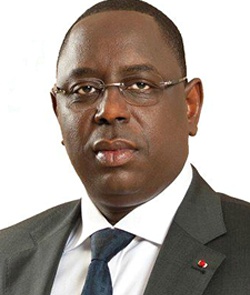 Senegal or the Republic of Senegal is a west African country with a total land area of about 196,722 squared kilometers. Senegal borders the Republic of Mali to the east, the Islamic Republic of Mauritania to the north and the Republics of Guinea and Guinea-Bissau to the south. Senegal has about 531 kilometers of coastline.
Senegal or the Republic of Senegal is a west African country with a total land area of about 196,722 squared kilometers. Senegal borders the Republic of Mali to the east, the Islamic Republic of Mauritania to the north and the Republics of Guinea and Guinea-Bissau to the south. Senegal has about 531 kilometers of coastline.
Senegal has a population of about 16.3 million people with the population growth rate around 2.6%. About 45% of the population lives in urban areas. Dakar, the capital of Senegal, contains about 3 million people. Major ethnic groups such as Wolof, Pular, Serer, Jola and Mandinka make up about 90% of the population. Europeans, Lebanese, and other minor groups make up the remaining 10% of the total population.
Senegal is blessed with abundance of natural resources including phosphates, Iron ore, fish, etc. Despite the abundance of natural resources in Senegal, Senegal remains one of the poorest countries in the world today with about 55% of the total population living below poverty line. Unemployment rate in Senegal is around 50% with most people living on less than $1.25 a day.
Although the HIV/AIDS adult prevalence rate in Senegal is low compared to other African countries, about 60,000 people are living with HIV/AIDS in Senegal today and about 2500 people die from HIV/AIDS every year.
Periodic droughts, seasonal flooding, deforestation and desertification, overgrazing, soil erosion, overfishing, weak environmental protective laws, etc. are some of the major problems threatening agriculture (and the environment) in Senegal today.
Besides the deadly HIV/AIDS, diseases such as diarrhea, hepatitis A, typhoid fever, dengue fever, Malaria, Rift valley fever, yellow fever, sleeping sickness, rabies and a host of others continue to threaten several lives in Senegal today.
Senegal has a very low literacy rate of about 39% for the entire population. The female literacy rate is even worse. Senegal has one of the worst female literacy rates in Africa today. Senegal's female literacy rate hovers around 29% which is very bad. The low female literacy rate also explains the high teenage pregnancy rate in Senegal today.
Lack of good drinking water and water for domestic purposes remains a major problem in Senegal today. A greater percentage of Senegal's population lacks access to good drinking water and water for domestic purposes which also explains the huge number of water-related diseases in this part of the world.
Poor Sanitation remains a major problem in Senegal today (especially in the overcrowded parts of big cities and towns).
Just like in most other African countries, corruption levels remain at all time high in Senegal today.

